Great Sources of Fall Color
If you’ve ever been to New England the last week of September into very early October, you know what fall color is all about. The Midwest and East Coast have their share of the glory, and so do parts of the South into Texas and Arkansas.
But for the average old landscaping guy it’s not always that easy. I’ve drawn together a list of five trees of all sizes that are fairly reliable in their fall color. See what you think.
Neil’s picks as some of the best for fall color in Texas…
These are plants that I’d recommend for fairly large parts of our state.
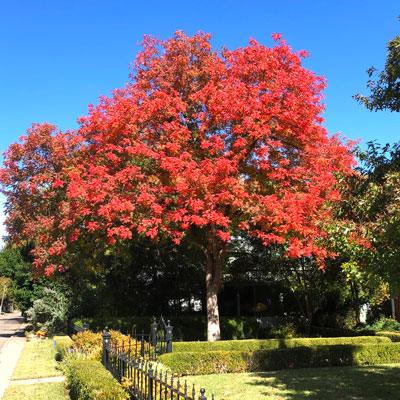
• Chinese pistachios. These are fairly large, rounded trees to 40 ft. tall and wide. They’re dark green during the growing season, turning shades of red, orange, burgundy and yellow in fall. Female trees do bear fruit. (They’re inedible by humans, but birds love them – which explains why you’ll see seedlings in nearby landscapes.) This is an outstanding tree in all parts of Texas.
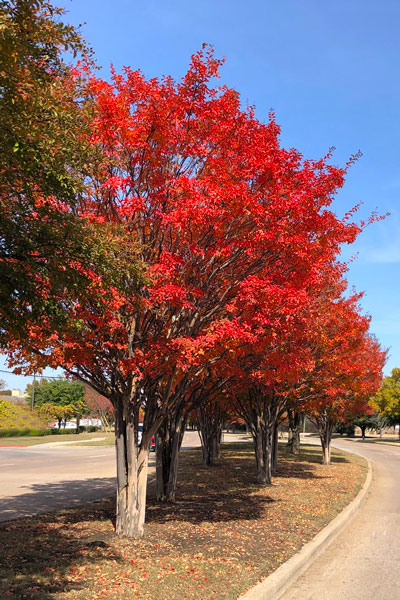
• Crape myrtles. We think of these as flowering shrubs or small trees, but they also produce lovely fall colors many years. This year has been a great example. Varieties with red, pink, purple or lavender flowers tend to have brighter, darker fall colors than the white-flowering types. If you don’t “top” your crape myrtles (a barbaric act anyway) you’ll get three or four rounds of blooms every summer. That means that the flower color is far more important to you than any fall color it may have. But take the fall foliage as a nice added bonus. Buy a plant that’s been trained tree-form unless you’re willing to wait 3-4 years to develop one on your own.
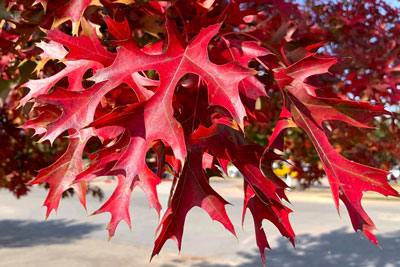
• Shumard red oaks. Wherever you live, if an oak grows there it will be the best tree you can plant. Shumard red oaks grow natively over the central third of the state running down the I-35 corridor. They won’t have the rich red fall foliage every year, but they do so often enough to make it work your while to include one in your plantings. They grow to be 50 ft. tall and wide.
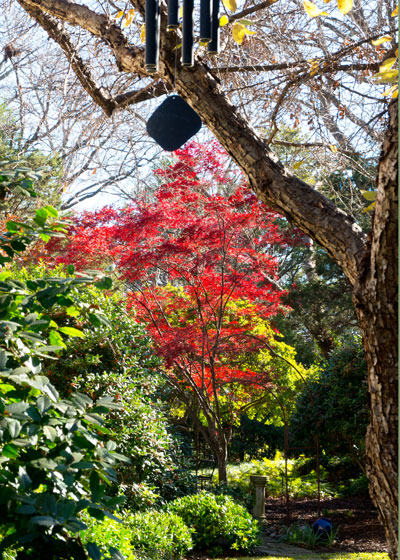
• Japanese maples. There are scores of types. Mature heights range from 2 to 32 ft., depending on the variety. Some have red leaves while others hold onto their green leaves. All will turn red in the fall. These are best suited to the eastern third of Texas. They do best in bright shade, preferably with no direct sunlight after 10 in the morning. Keep them moist at all times to avoid tip burn of the leaves.
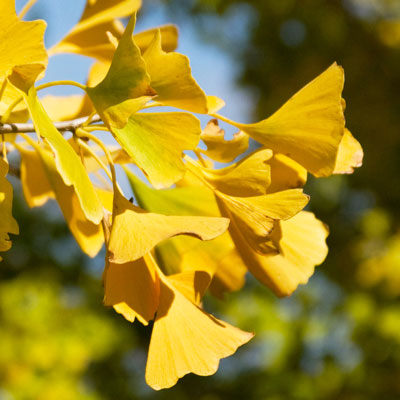
• Ginkgoes. You must specify a male grafted variety so that you won’t get any fruit. It has a putrid aroma to it. The selection call Autumn Gold is the old standard, and those of us who have it love it. Ginkgoes are slow-growing in Texas. The farther west you go with them the shorter they will be at maturity, but in general expect them to be 25 to 30 feet tall and wide. Their leaves resemble fans. They’re silvery green in the summer, turning brilliant gold in the fall. Ginkgoes make outstanding accent trees out from entries or adjacent to patios.
Near misses…
You may have a favorite tree that didn’t get mentioned. Let me give you a few others of the most handsome types and a quick comment as to why they didn’t get put on the list.
• Ornamental pears. Brittle wood; weak branching; short life expectancy.
• Sweetgums. Iron deficiency in many parts of the state (except East Texas). Annoying fruit that are painful, messy in downspouts.
• Dogwoods. Lovely when flowering, but severe iron deficiency issues.
• Blackgums. Beautiful red fall color on large trees, but native to East Texas and not well suited outside of that region.
Note: In many parts of Texas this year’s fall color display was cut unusually short by the record cold weather earlier this week. Don’t despair. Texas gardeners learned long ago – there’s always next year!
